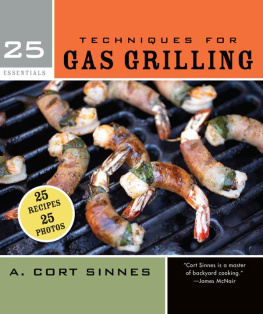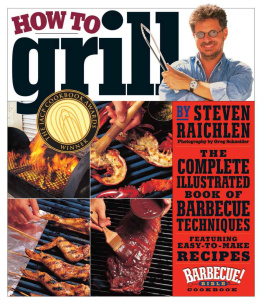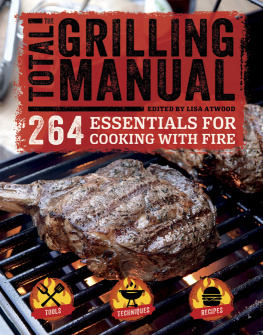The Harvard Common Press
535 Albany Street
Boston, Massachusetts 02118
www.harvardcommonpress.com
Copyright 2012 by A. Cort Sinnes
Photographs copyright 2012 by Joyce Oudkerk Pool
All rights reserved. No part of this publication may be reproduced or transmitted in any form or by any means, electronic or mechanical, including photocopying, recording, or any information storage or retrieval system, without permission in writing from the publisher.
Printed in China
Printed on acid-free paper
Library of Congress Cataloging-in-Publication Data
Sinnes, A. Cort.
25 essentials. Techniques for gas grilling / A. Cort Sinnes.
p. cm.
Includes index.
ISBN 978-1-55832-734-4 (hardcover : alk. paper)
1. Barbecuing. 2. Gas grills. I. Title. II. Title: Techniques for gas grilling. III. Title: Gas grilling. IV. Title: Twenty-five essentials, techniques for gas grilling.
TX840.B3S5588 2012
641.5'784--dc22
2010024190
Special bulk-order discounts are available on this and other Harvard Common Press books. Companies and organizations may purchase books for premiums or resale, or may arrange a custom edition, by contacting the Marketing Director at the address above.
Book design by Elizabeth Van Itallie
Photography by Joyce Oudkerk Pool, with assistance from Cody Gantz
Food styling by Jason Wheeler
10 9 8 7 6 5 4 3 2 1
FOR JOAQUIN
May cooking outdoors give you as much pleasure in your life as it has given me in mine. Let's eat!
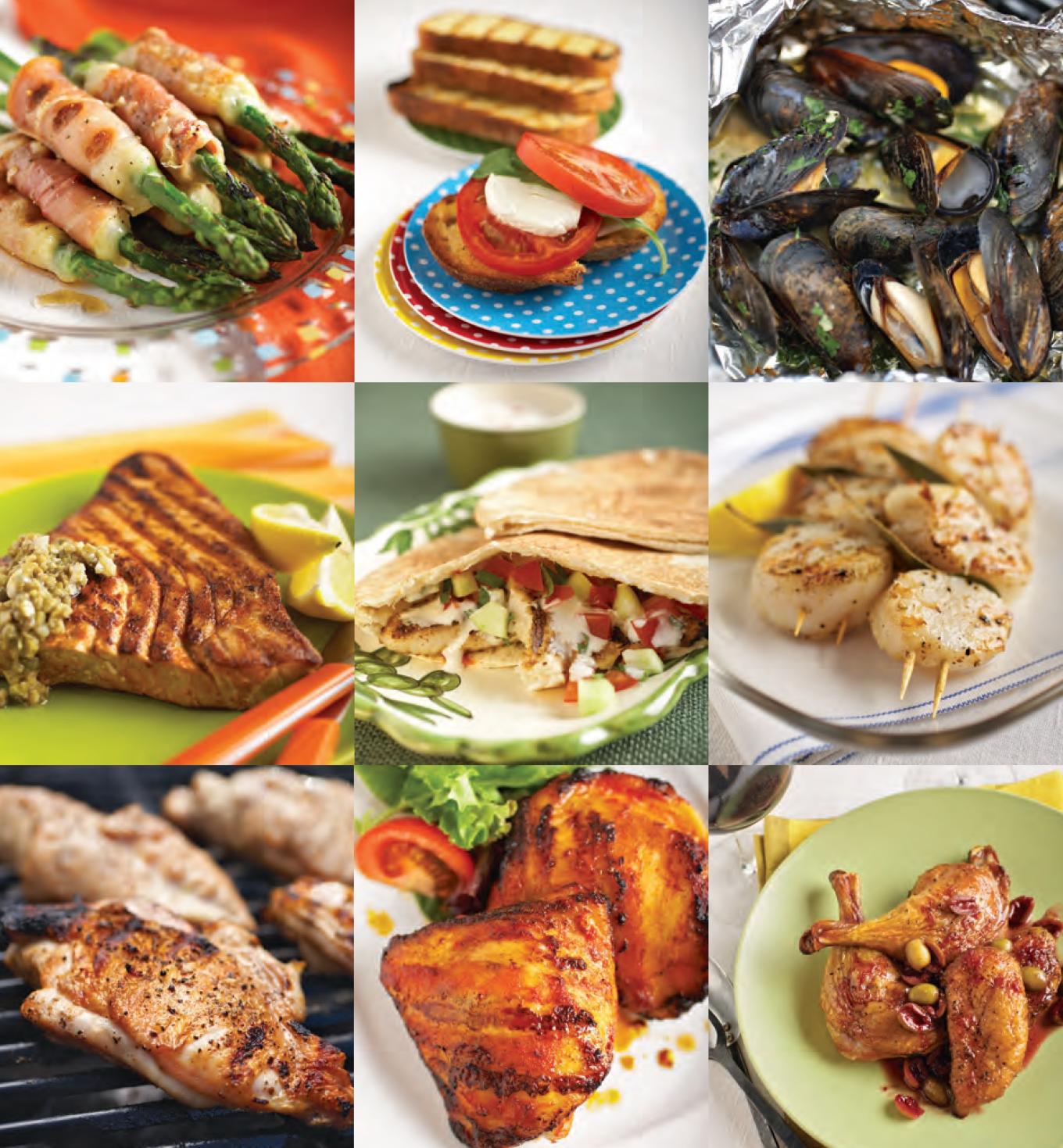
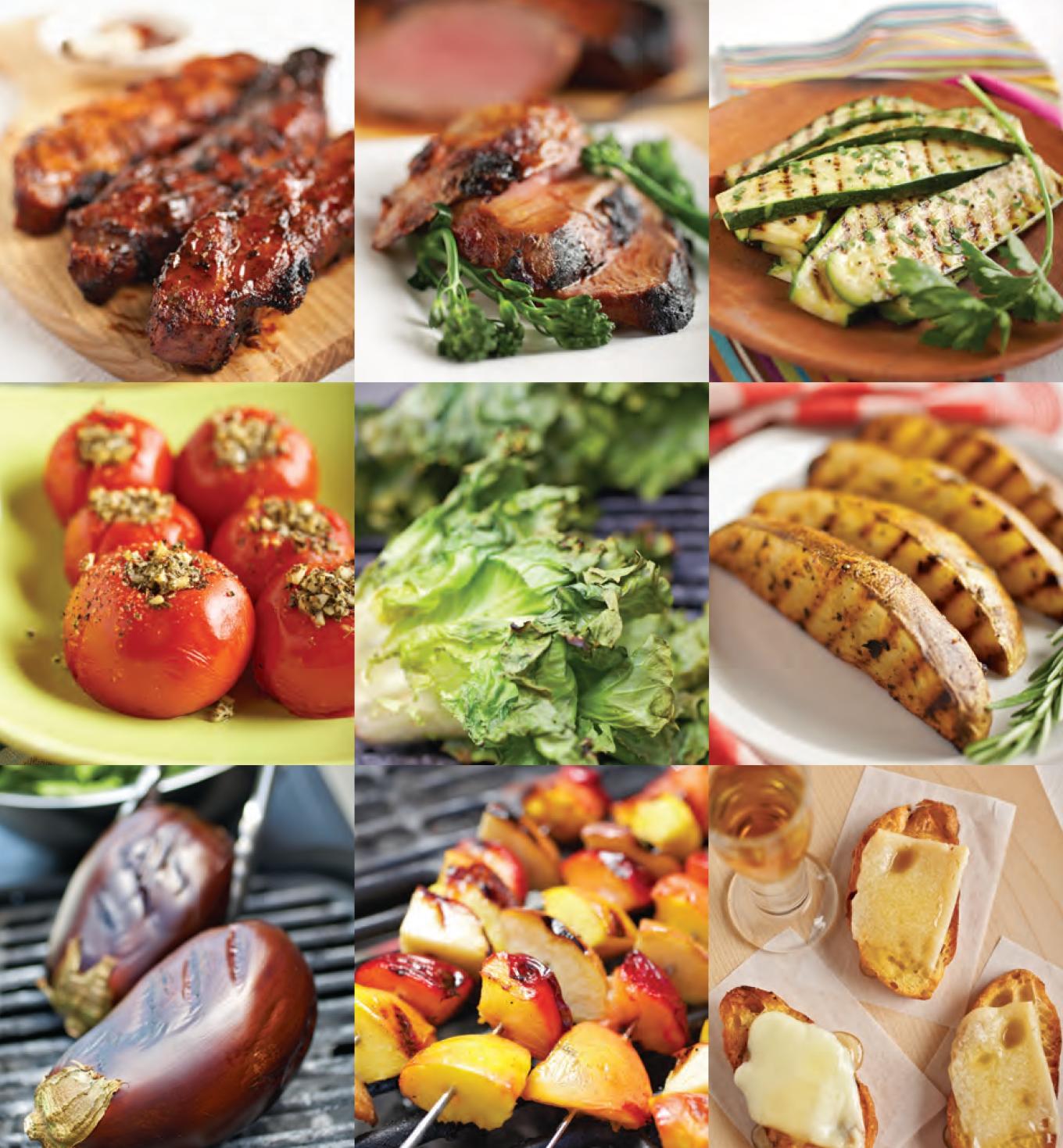
Introduction
The goal of this book is a simple and direct one: namely, to expand the number of delicious dishes you can confidently cook on your gas grill. The 25 recipes presented here should be considered "sure bets"recipes that come together quickly with a minimum of fuss, have memorable flavors, and can be produced by novice and experienced grillers alike. If you master only half a dozen of the recipes in this book, I can almost guarantee that you will be known far and wide as an excellent griller.
If you're a novice griller, please read through The Essentials of Gas Grilling on . The list of things you need to know about gas grilling is short but important. It's good to keep in mind that gas grills were developed to simplify home grilling and that gas grilling remains a very straightforward, simple, relaxed cooking method. The recipes on the following pages reflect that straightforward, relaxed attitude but with a creative, full-flavored flair that is sure to win you, the griller, a lot of compliments. And what cook doesn't like compliments?
Luckily for the backyard griller, the ever-increasing popularity of gas grills has brought about significant improvement to the grills themselves. Manufacturers have been listening to the marketplace, resulting in better heat distribution, less likelihood of flare-ups, more useful accessories, and better and longer-lasting construction. It's a good time to be grilling over gas!
Grilling over a live fire is the most adaptable and universal cooking technique known to mankind. Dig deep enough in any of the world's culinary histories, and you'll find a grill, a fire, and some tasty food waiting to be turned into a meal. Each time you light up your gas grill and prepare something you've never tasted before, you're engaging in an age-old practice, no matter which culinary tradition you're trying.
The Essentials of Gas Grilling
Anyone who has visited a store where gas grills are sold knows there is a dizzying array of choices. Trying to sort through these choices can be a confusing process. Here is a short list of things to be aware of when buying a new gas grill:
- You don't need to spend a fortune to get a good gas grillin fact, you should be able to purchase an excellent grill that will last between 10 and 15 years for between $300 and $400.
- The sturdiest and longest-lived grills are constructed from stainless steel or cast aluminum. Avoid grills constructed from sheet metal.
- Look for grills with a heat output of at least 35,000 BTUs with at least two burners; three is better for indirect cooking (see below).
- The more heavy-duty the cooking grate, the better. Look for a cooking grate constructed of stainless steel, with bars at least inch thick.
- A thermometer mounted in the hood is practically a necessity.
- You can never have enough unencumbered horizontal space. Shelves on both sides of the grill will come in extremely handy.
- If it doesn't come with one, be sure to purchase a protective cover for your grill; it will add years to its life.
DIRECT AND INDIRECT COOKING
Direct cooking on a gas grill means cooking directly over the heat source, with the lid up or down. Indirect cooking means placing the food to be cooked over a burner that has been turned off, leaving the other one or two burners on low, medium, or high heat. (All but the smallest gas grills are equipped with more than one burner.) In indirect cooking, the lid of the grill is kept closed.
If you are unfamiliar with indirect cooking, it's a technique you will want to master. The reason for this is twofold. First, indirect cooking virtually ensures that the food being cooked will not burn. Second, indirect cooking greatly reduces the incidence of fat dripping onto the burners and returning to the food via flare-ups and excessive smoke.
You may want to place certain foods directly over the heat at the beginning of the cooking time to sear them before moving them to indirect heat. At other times, you may want to place foods over direct heat only at the end of cooking timeperhaps for just a minute or twoto develop a nicely browned exterior.
COOKING TIMES
Many, many variables affect the cooking time of gas-grilled food. The outside air temperature and the level of wind will change the temperature inside the grill, in the way you might predict butin my experience at leastmore dramatically than you'd expect. Just as much variability comes from your grill itself: the types of burners and radiant material in your particular model, the shape and size of the grill, the distance from the burners or radiant material to the cooking grate, and, especially, the differences from one manufacturer or model to another in what the settings "high," "medium," and "low" mean can all affect your cooking times.
Therefore, all of the cooking times given on the following pages are, by necessity, approximate. As many people do with their indoor ovens, after you've used your grill a bit you will get a feel for whether your grill cooks "hot" (that is, more quickly) or "cool" (that is, more slowly) relative to the specific recipe instructions, and you can make adjustments accordingly. To avoid adding even more variability to cooking times, try to keep to a minimum the number of times you open the grill's lid while you are cooking. Every time you open the lid, you lose heat and add to the cooking time.
Keep in mind that it is always better to err on the side of undercooking rather than overcooking. Any food can easily be returned to the grill for more cooking, but there is little you can do if you have overcooked your food.
GENERAL GRILLING GUIDELINES
- Always start with the best possible ingredients, whether it's a tomato, a tuna steak, or a pork loin. Grilling is a very simple form of cooking, and, as such, there is little to mask or improve the flavor of ingredients that are less than the best and freshest.
Next page
